Japan’s parfait culture represents far more than a simple dessert trend. These towering glass creations have become cultural symbols, blending Western influences with distinctly Japanese aesthetics and values. Understanding parfait culture offers insight into Japan’s approach to food presentation, seasonal appreciation, and social dining experiences.
The Japanese parfait stands apart from its French origins through meticulous attention to detail and artistic presentation. Each layer tells a story, combining textures, colors, and flavors that reflect Japan’s deep appreciation for visual harmony. This dessert culture has evolved into a significant part of Japan’s culinary landscape, influencing everything from restaurant design to social media trends.
Exploring parfait culture reveals how Japan transforms borrowed concepts into uniquely Japanese experiences. The attention to craftsmanship, seasonal ingredients, and Instagram-worthy presentation makes these desserts cultural artifacts worth understanding.
The Origins and Evolution of Japanese Parfaits
Japanese parfait culture began in the 1960s when Western-style cafes introduced layered desserts to urban areas. Initially, these desserts closely resembled their French counterparts, featuring simple layers of cream, fruit, and cake.
The transformation happened gradually through the 1970s and 1980s. Japanese patissiers began incorporating local ingredients like matcha, red bean paste, and seasonal fruits. They also elevated the visual presentation, creating taller, more elaborate structures that emphasized vertical display.
By the 1990s, parfaits had become distinctly Japanese. The focus shifted from simple layering to complex architectural desserts. Restaurants began using specialized glassware, and the height of parfaits became a point of pride for establishments.
The 2000s brought technological innovation to parfait culture. Specialized tools for creating perfect spheres of ice cream, precise layering techniques, and temperature-controlled storage allowed for even more elaborate creations. This period established parfaits as serious culinary art forms rather than simple desserts.
Regional Parfait Styles Across Japan
Tokyo’s Towering Creations
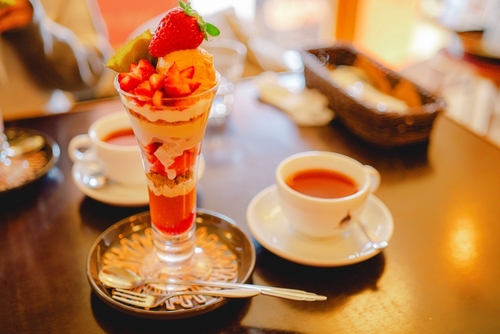
Tokyo parfaits are known for their impressive height and Instagram-worthy presentation. Harajuku district establishments compete to create the most photographable desserts, often reaching heights of 12 inches or more. These parfaits typically feature multiple ice cream flavors, fresh fruits, cookies, and decorative elements.
Popular Tokyo parfait destinations focus on seasonal themes. Spring parfaits showcase sakura flavors and pink color schemes, while autumn versions highlight persimmons, chestnuts, and warm spice combinations.
Osaka’s Comfort-Focused Approach
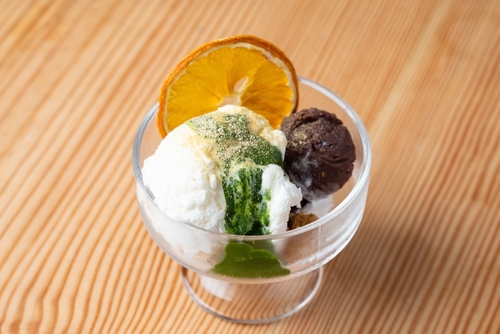
Osaka parfait culture emphasizes comfort and generous portions over extreme height. Local establishments focus on rich, satisfying combinations that complement the city’s reputation for hearty food culture.
Osaka parfaits often incorporate local specialties like sweet potato, traditional sweets, and regional fruit varieties. The presentation remains elegant but prioritizes taste and substance over pure visual impact.
Kyoto’s Traditional Elegance
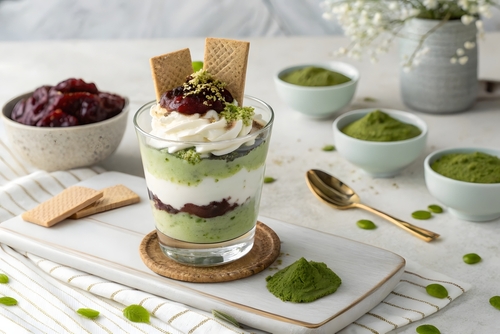
Kyoto parfaits reflect the city’s traditional aesthetic sensibilities. These creations emphasize subtle flavors, seasonal ingredients, and restrained presentation that honors Japanese design principles.
Matcha features prominently in Kyoto parfait culture, often combined with traditional sweets like wagashi or seasonal specialties. The focus remains on harmony between flavors and visual elements that reflect changing seasons.
The Art of Parfait Construction
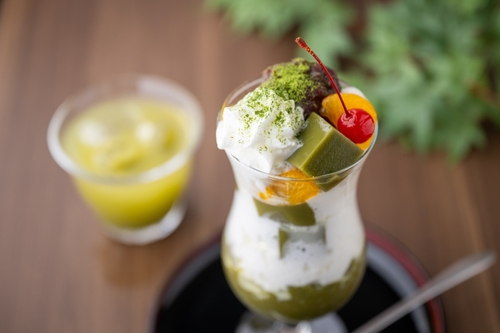
Layering Techniques
Professional parfait construction follows specific principles that ensure both visual appeal and structural integrity. The bottom layer typically consists of dense elements like cake or cookies that provide stability for upper layers.
Temperature considerations play a crucial role in layering. Ice cream layers are added using specialized scoops that create perfect spheres, while cream layers are piped to maintain distinct boundaries between flavors.
Ingredient Selection and Preparation
Seasonal ingredient selection drives parfait menu changes throughout the year. Spring menus feature strawberries, sakura-flavored elements, and light, floral notes. Summer parfaits incorporate tropical fruits, shaved ice, and cooling elements.
Autumn parfait ingredients include persimmons, sweet potatoes, chestnuts, and warm spices that complement cooler weather. Winter versions often feature citrus fruits, chocolate elements, and ingredients that provide comfort during cold months.
Presentation and Garnishing
Garnishing techniques in Japanese parfait culture follow principles borrowed from traditional food presentation. Each element serves both decorative and functional purposes, contributing to the overall flavor profile while enhancing visual appeal.
Color coordination follows seasonal themes and Japanese aesthetic principles. The arrangement of toppings creates visual movement that draws the eye upward through the parfait’s layers.
Cultural Significance and Social Aspects
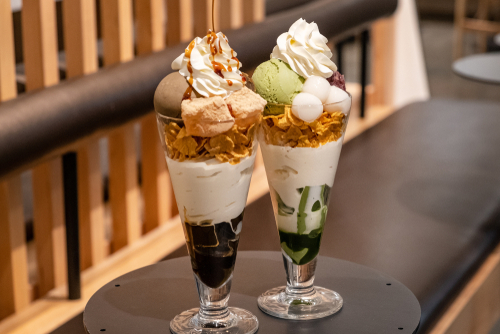
Parfaits as Social Media Phenomena
Japanese parfait culture has embraced social media integration as a fundamental aspect of the dining experience. Restaurants design parfaits specifically for photography, incorporating elements that create visual interest in digital formats.
The rise of Instagram and other visual platforms has influenced parfait design significantly. Establishments now consider lighting, background elements, and photogenic qualities when developing new parfait concepts.
Seasonal Celebration Through Food
Parfait culture connects to Japan’s deep appreciation for seasonal changes. Menus rotate regularly to reflect ingredient availability and seasonal aesthetics, creating anticipation for limited-time offerings.
This seasonal approach extends beyond ingredients to include color schemes, garnish selection, and even glassware choices that complement specific times of year.
Group Dining and Sharing Culture
While parfaits are individual desserts, they often serve as centerpieces for group dining experiences. Friends gather to try different parfait varieties, sharing photos and discussing flavors as part of the social experience.
Some establishments offer large-format parfaits designed for sharing, which encourage group participation and create memorable dining experiences.
Modern Innovations and Trends
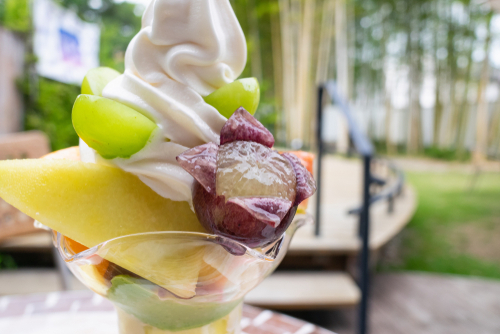
Technology in Parfait Creation
Modern parfait establishments incorporate technology for consistency and innovation. Specialized equipment creates perfect texture in ice creams and creams, while precision tools ensure consistent layer thickness and presentation.
Temperature control technology allows for complex parfaits that maintain structural integrity throughout the dining experience. This technological approach enables more ambitious designs and flavor combinations.
Fusion Approaches
Contemporary parfait culture embraces fusion concepts that combine Japanese techniques with international flavors. These creations might feature French pastry elements, American candy influences, or Southeast Asian tropical fruits.
The fusion approach maintains Japanese presentation standards while expanding flavor possibilities for increasingly international palates.
Health-Conscious Adaptations
Recent trends include parfaits designed for health-conscious consumers. These versions feature reduced sugar content, alternative sweeteners, and ingredient substitutions that accommodate dietary restrictions without compromising visual appeal.
Vegan parfait options use plant-based creams and alternative proteins while maintaining the elaborate presentation standards that define Japanese parfait culture.
Frequently Asked Questions
What makes Japanese parfaits different from Western parfaits?
Japanese parfaits emphasize visual presentation, seasonal ingredients, and artistic construction techniques. They’re typically taller, more elaborate, and designed as Instagram-worthy experiences rather than simple desserts.
How much do parfaits typically cost in Japan?
Parfait prices in Japan range from ¥800 to ¥3,000 ($6-22 USD), depending on size, ingredients, and restaurant location. Premium establishments in tourist areas charge higher prices for elaborate presentations.
Are parfaits only available in specialty dessert shops?
Parfaits are available in various settings including department store restaurant floors, hotel cafes, family restaurants, and specialized dessert establishments. Many locations offer parfaits as signature menu items.
What’s the best time to visit parfait shops in Japan?
Parfait shops are busiest during afternoon hours (2-5 PM) and weekends. Seasonal menu changes create peak interest periods, particularly during spring sakura season and summer fruit seasons.
Can I make authentic Japanese parfaits at home?
Home creation is possible with proper glassware, quality ingredients, and attention to layering techniques. However, achieving restaurant-level presentation requires specialized tools and considerable practice.
Experience Japan’s Sweet Cultural Expression
Japanese parfait culture offers visitors and locals alike a unique window into the country’s approach to food as art. These elaborate desserts represent cultural values of seasonal appreciation, meticulous craftsmanship, and social dining experiences.
Whether you’re exploring Tokyo’s towering creations, Osaka’s comfort-focused versions, or Kyoto’s traditional elegance, parfait culture provides memorable experiences that extend far beyond simple dessert consumption. The next time you encounter a Japanese parfait, take a moment to appreciate the cultural significance layered within each colorful creation.
Consider planning your Japan visit around seasonal parfait offerings to fully experience how these desserts reflect the country’s deep connection to natural cycles and artistic expression.